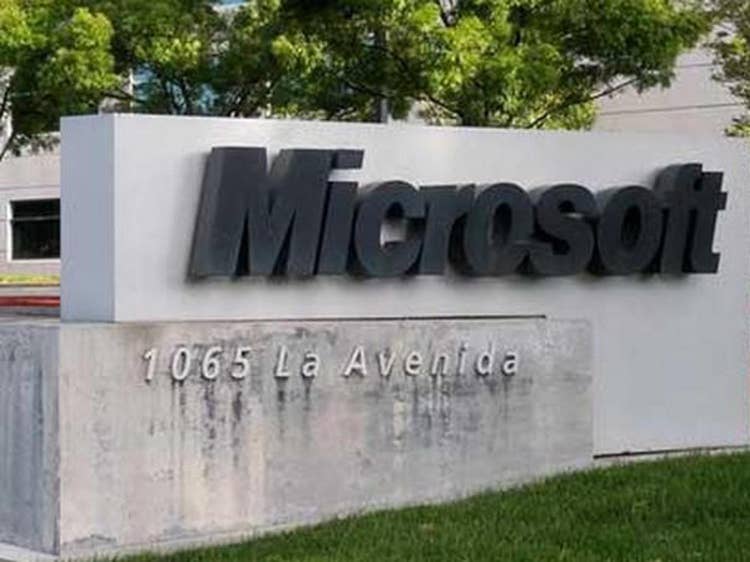Microsoft Q2 Earnings: 5 Things To Know
‘The next major wave of computing is being born as we turn the world’s most advanced AI models into a new computing platform,’ Microsoft CEO Satya Nadella said on Microsoft’s latest earnings call.

A temporary slowdown in new business, betting on artificial intelligence and new milestones for the security, Teams and Azure businesses were among the most important information shared by Microsoft during its earnings call for the second quarter of its fiscal year.
Following Microsoft’s announcement of 10,000 Microsoft employees getting laid off and signs of weaker spending as the United States continues to grapple with inflation and a possible recession, Microsoft acknowledged some troubling short-term trends while boasting about its investment in technology innovation and its existing products.
“The next major wave of computing is being born as we turn the world’s most advanced AI models into a new computing platform,” Microsoft CEO Satya Nadella said on the call Tuesday – where he reported results for the quarter that ended Dec. 31. “We‘re going to lead in the AI era knowing that maximum enterprise value gets created during platform shifts.”
[RELATED: Microsoft Slowdown? Partners Investing Despite ‘More Cost-Conscious’ Customers]
MSFT Q2 Earnings
Partners have told CRN that even if Microsoft growth is decelerating for their businesses, they still see potential for bringing in more revenue from customers by offering more Microsoft products and services in security, data analytics and moving legacy applications to the cloud.
Microsoft’s stock was trading at $247.54 a share Thursday afternoon, up about 2 percent from market close Tuesday.
Here’s what else you need to know.

Temporary New Business Slowdown
Microsoft will invest in artificial intelligence and helping customers get more out of their spend with the vendor as it navigates a temporary “slowdown in growth of new business” for certain offerings.
Nadella told analysts Tuesday that the slowdown is temporary and a result of customers spending a lot of money on digital tools during the height of the pandemic and now wanting to get the most out of what they bought before spending more money with the Redmond, Wash.-based vendor.
Microsoft Chairman and CEO Satya Nadella told analysts on the company’s Tuesday earnings call for the second quarter of its fiscal year, which ended Dec. 31, that the slowdown is temporary and a result of customers spending a lot of money on digital tools during the height of the pandemic and now wanting to get the most out of what they bought before spending more money with the Redmond, Wash.-based vendor.
“Just as we saw customers accelerate their digital spend during the pandemic, we are now seeing them optimize that spend,” he said. “Also, organizations are exercising caution given the macroeconomic uncertainty.”
Microsoft CFO Amy Hood blamed a “slowdown in growth of new business” for having an effect on revenue from various businesses within the company, including revenue from stand-alone Office 365, Enterprise Mobility and Security (EMS) and Windows commercial products sold outside the Microsoft 365 suite.
The slowdown led to Windows commercial products and cloud services revenue declining by 3 percent— increasing by 3 percent ignoring foreign exchange—and prevented further growth in the EMS business, which still grew 16 percent year over year to 241 million seats.
Performance in the U.S. “was weaker than expected” during the quarter, Hood said.
That slowdown in new business will also affect some of next quarter’s results, Hood said. Windows commercial products and cloud services will see “relatively flat” revenue growth year over year due in part to the slowdown. And Microsoft also expects “relatively flat” growth in commercial bookings year over year in part due to the slowdown.

Microsoft Bets On AI
On the more positive side of Microsoft’s latest earnings report, Nadella promised that Microsoft’s investments in AI within the company and investment in ChatGPT creator OpenAI will pay off because “every app is going to be an AI app.”
“The next major wave of computing is being born as we turn the world’s most advanced AI models into a new computing platform,” Nadella said on the call.
“We‘re going to lead in the AI era knowing that maximum enterprise value gets created during platform shifts,” he said.
Microsoft already has “the first at-scale AI product built for this era” in its GitHub Copilot offering, which has more than 1 million users to date, he said.
“The age of AI is upon us and Microsoft is powering it,” he said. “We are witnessing nonlinear improvements in capability of foundation models, which we are making available as platforms. And as customers select their cloud providers and invest in new workloads, we are well-positioned to capture that opportunity as a leader in AI. We have the most powerful AI supercomputing infrastructure in the cloud.”

New Teams, Azure, Security Milestones
Microsoft now has more than 12,000 Azure Arc customers, Nadella said. Microsoft 365 has more than 63 million consumer subscribers, up 12 percent year over year.
Teams surpassed more than 280 million monthly active users during the quarter, “showing durable momentum since the pandemic, and we continue to take share across every category—from collaboration to chat to meetings to calling.”
“One of the things was, what’ll happen to Teams usage after the pandemic?” Nadella said. “Guess what? They’re up. So that’s good news. And now once we cycle through that, again, the seats will get added.”
The more than 500,000 active Teams Rooms devices is a 70 percent increase year over year. The number of customers with more than 1,000 rooms doubled year over year.
Microsoft has added more than 5 million public switched telephone network (PSTN) seats for Teams Phone over the last 12 months. Nadella called Teams Phone “the market leader in cloud calling.”
Meanwhile, in a blog post Wednesday, one of Microsoft’s top cybersecurity executives, Vasu Jakkal, pointed out that the company’s security business is surging thanks in part to the work of a lot of partners — more than 15,000 at present.
On Tuesday, Microsoft CEO Satya Nadella disclosed on the company’s quarterly earnings call that its security business revenue passed the $20 billion mark during the prior 12 months.
That’s up from $15 billion — the size of the annual Microsoft security business as disclosed in January 2022 — and $10 billion in January 2021.

Growth Deceleration
Multiple analyst reports issued after the earnings call questioned when Microsoft’s decelerated growth will end. While Azure’s 38 percent growth beat estimates, Nadella said that Azure demand started to slow in December and that the company will take “this year to optimize” existing customer spending – that is, there is a slowdown in new business.
In a Thursday report from investment firm Wedbush, analysts said that cloud strength, cost cuts to improve margins and overall guidance keep them bullish on Microsoft. While Microsoft also faces “the worst PC market in decades,” Azure and Office 365 revenue should make up for that part of the business.
“The question now in the Street‘s mind is what does this Azure decel path look like over the coming quarters in a very uncertain macro,” according to the report.
In a Wednesday report from Morgan Stanley, the firm said that “no changes in competitive dynamics,” intact “underlying secular trends” and the fast pace of AI development expanding Azure’s market opportunity were all positives for Microsoft.
Growth in Office 365 Commercial was also ahead of last quarter and expectations, and the productivity and business process segment (BPS) – which includes Office Commercial and Dynamics 365 – and intelligent cloud segment – which includes Azure – both beat Microsoft guidance, according to Morgan Stanley.
The firm also liked Microsoft’s moves to expand margin through reducing costs in energy and employee count.
Still, bad news from Microsoft included missing total revenue expectations for the quarter, low expectations for the next quarter and worse than expected results for its “more personal computing” segment – which includes devices, gaming and advertisements.
Morgan Stanley expects total revenue for next quarter of $50.95 billion, an increase of 6 percent year over year ignoring foreign exchange, but below expectations of $52.5 billion. The firm expects Microsoft to fall below 20 percent commercial revenue growth for fiscal year 2023.
KeyBanc was optimistic about Microsoft’s long-term business in a report Wednesday.
“Despite cyclical headwinds across the business, we remain bullish LT on MSFT‘s hyperscale cloud and integrated infrastructure stack, application development platform, and expanding business application portfolio,” according to the report.

$53B In Revenue In Q2
Microsoft saw $52.7 billion in revenue during the quarter, an increase year over year of 2 percent.
Microsoft Cloud revenue was $27.1 billion, an increase of 29 percent year over year ignoring foreign exchange.
Microsoft’s productivity and business process segment brought in $17 billion during the quarter, up 13 percent year over year ignoring foreign exchange.
Office 365 Commercial revenue grew 18 percent. Hood said that small and midsize businesses—a segment partners usually work in—and frontline worker offerings drove seat growth in this part of the business. But the slowdown in new business growth hindered higher growth for this part of Microsoft’s revenue.
Dynamics products and cloud services revenue grew by 20 percent year over year, with Dynamics 365 revenue growing 29 percent.
Microsoft’s intelligent cloud segment brought in $21.5 billion in revenue during the quarter, an increase of 24 percent year over year ignoring foreign exchange.
Device revenue decreased 34 percent year over year ignoring foreign exchange. Hood said this number came in “below expectations due to execution challenges on new product launches.”
For the first half of the fiscal year, Microsoft’s commercial business revenue grew 20 percent, Hood said.